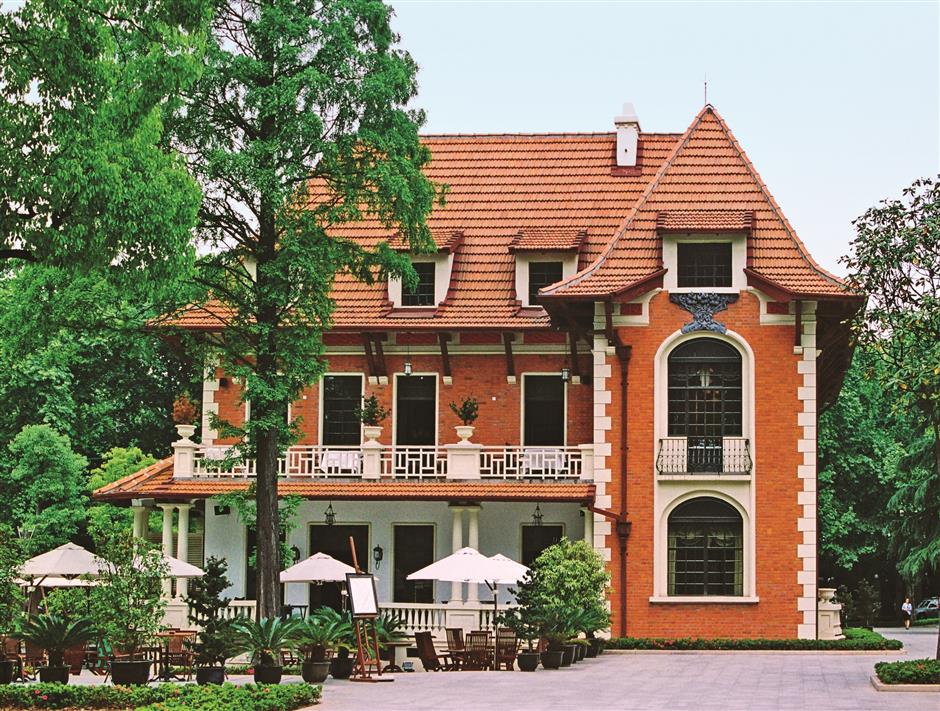今日上海
这座红房子里蕴藏着中国音乐史中浓重一笔 - 2024年06月11日
Fascinating anecdotes of Chinese music are preserved in the 'little red building'
From its origins in 1921 to becoming a hallmark of Chinese cultural history, the Pathé Records Company played a pivotal role in shaping the Chinese music industry.
The company was founded by French entrepreneur E. Labansat, who arrived in Shanghai in the late 1890s and played records on the streets.
Labansat established the company in 1908 and rebranded it Pathé Company in 1910. It acted as an agency for France’s Pathé Frères, selling phonographs, records and movie equipment.
The company came into prominence by recording the works of Peking Opera artists like Tan Xinpei and capturing the essence of traditional Chinese music.
Pathé continued to expand even after World War I. In 1915, the company purchased land at the site which is now Xujiahui Park, and established China’s first record-producing business in 1917.

The Pathé building is a landmark not only in Xujiahui Park but also in Chinese music history.
The company specialized in making coarse-groove records with a distinctive red rooster insignia in the center.
Pathé’s quest to create localized records ushered in a new era of Chinese music. The company continued to produce popular recordings of classic Chinese operas.
Its eclectic repertoire included military marches, national anthems and Buddhist sutras, all narrated by monks and packed with scriptures for listeners to repeat along with, leading to its immense popularity.
Pathé soon rose to become China’s largest and most powerful record company.
However, the Great Depression brought about tremendous changes around the world, and Pathé Frères suffered substantial upheavals. In 1930, British Columbia Records acquired the company and continued using the Pathé brand due to its significant market influence.
From 1908 to 1949, Pathé produced 6,357 record molds, far more than any other company in China.
The Republic of China (1912-1949) era was renowned for the fusion of music and cinema. Many popular songs with movie themes were performed by the actresses themselves. These actresses became icons of urban fashion and trends.
Prominent Chinese musicians such as Nie Er, Xian Xinghai and He Luting were regularly spotted in the building in Xujiahui.
Noted Chinese composer Ren Guang, who had returned from France, became Pathé’s first music director in 1928.
During the critical period of resistance against Japanese aggression, they composed and recorded numerous influential patriotic songs.
On May 9, 1935, the Pathé studio in Shanghai recorded the “March of the Volunteers,” which eventually became China’s national anthem.
The song was featured in the film “Children of Troubled Times,” which premiered on May 24, 1935. Pathé released the first recording of “March of the Volunteers,” performed by Yuan Muzhi and Gu Menghe, in July of that year.
The release received widespread coverage in the influential local daily Shen Bao, or Shanghai News in English, which described it as “a magnificent song of resistance against the iron hoof, filled with heroism, sorrow, ease and brightness, evoking joy, sadness, excitement and a sense of duty to the motherland.”
On September 27, 1949, the “March of the Volunteers” was recognized as the interim national anthem.
With the establishment of the People’s Republic of China, Pathé Company gave way to Shanghai Record Factory in 1952 and then China Record Company Shanghai Branch, with Zhonghua Record as its new brand.
It was renamed China Record Factory in 1955 and was responsible for numerous “firsts” in Chinese record history until its relocation in May 2001.
The area has now been developed as Xujiahui Park.
The Pathé building is a three-story brick and wood construction in the Dutch style that is affectionately known as the “little red building.”
It covers a land area of 192 square meters, with a total floor area of 480 square meters. The recording studios and artist lounge were located on the ground floor, while the music editors’ offices were on the second story. The third story housed the company’s owner, Labansat.
The building’s facade is embellished with masonry and features square doors and windows and exposed red-brick walls, all of which contribute to its special architectural appeal.
Today, the structure in Xujiahui is a well-preserved historical site. It houses the Pathé Record Museum to ensure that the historic institution’s heritage continues to influence and inspire.
Source: Shanghai Daily
